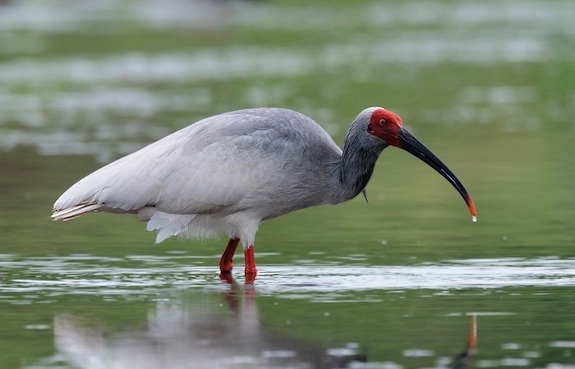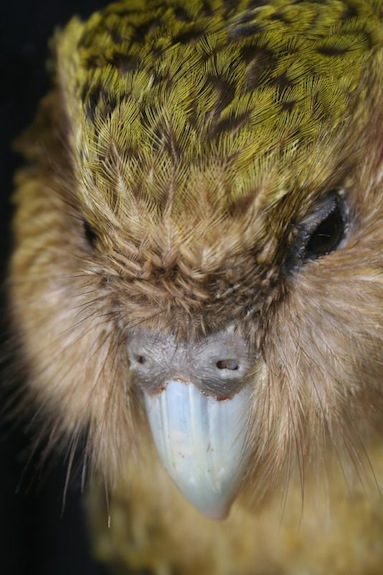The World’s 5 Most Mysterious Bird Species
Stunning plumage, strange eating habits and extreme rareness characterize these enigmatic birds
![]()

The crested ibis is one of the world’s most endangered bird species, but captive breeding programs might help it make a comeback. Image via Flickr user Andy_Li
In our October issue, Michelle Nijhuis joins wildlife biologists in searching Colorado’s caves and waterfalls for one of the world’s most mysterious bird species: the black swift. Although fewer than 100 breeding sites of the black swift are known, Nijhuis was lucky enough to see ornithologist Ron Torretta locate a black swift that had been geotagged in 2010, providing researchers with a cache of information about the wanderings of the enigmatic bird. Here are a few more of the most mysterious and elusive of the world’s bird species.
1. Night Parrot: Between 1912 and 1979, birders spotted this elusive species, native to the interior of Australia, exactly zero times—leading most scientists to believe it had gone extinct. Since then, a tiny handful of sightings of the nocturnal, yellow-green bird have occurred, and experts now estimate that the population is somewhere between 50 and 250 mature individuals. After the last verified sighting in November 2006, when park rangers in the state of Queensland turned up a decapitated specimen that had died after flying into a barbed-wire fence, the Australian government chose to keep the find temporarily secret while they searched for more night parrots, so as to avoid an influx of birders flooding the remote park in hopes of spotting one of the world’s rarest birds.

The Ribbon-tailed Astrapia has tail plumage three times its body length, the longest for any bird. Image via Wikimedia Commons/Marka Harper
2. Ribbon-tailed Astrapia: Endemic to the forest highlands of Papua New Guinea, this bird has the longest tail feathers (in relation to body size) of any bird species, with feathers three times its body length. Unfortunately, this stunning plumage has enticed poachers; hunting, along with habitat loss, has led to the species being listed as “near threatened” by the International Union for Conservation of Nature. The species, the most recent bird of paradise to be documented, was first described by explorer Fred Shaw Mayer in 1938.
3. Palila: This species of Hawaiian honeycreeper has one particularly mysterious characteristic—it subsists almost exclusively on the seeds of the māmane plant, which contain a level of toxins that would kill any other small animal. Scientists aren’t sure how the birds digest the seemingly-lethal seeds, although the palila have been observed avoiding certain plants, indicating they might have a way of selecting seeds with lower levels of poison. In 1978, the federal government ruled that feral goats and sheep had to be removed from the palila’s only remaining habitat—the upper slopes of Mauna Kea on the Big Island of Hawai’i—since they consumed māmane plants and threatened the birds’ survival.

The flightless kakapo nearly went extinct when invasive predators were intentionally introduced to New Zealand. Image via Wikimedia Commons/Brent Barrett
4. The Kakapo: Some 82 million years ago, the island of New Zealand broke off from what would become Australia, and the strange, flightless nocturnal parrot species called the kakapo began its unusual evolutionary path. In the absence of predators, it became the world’s largest type of parrot and lost the ability to fly; when European colonists introduced cats, rats and ferrets to New Zealand to control the population of rabbits, the kakapo was nearly wiped out. Now, just 126 wild kakapos live on three predator-free islands off the coast of New Zealand.
5. The Crested Ibis: Named for the crest of white plumage that extends from its nape, the crested ibis used to nest across Japan, China, Korea, Taiwan and Russia. By 1981, after years of habitat loss, just five individuals remained in the wild in Japan, and though scientists took the birds into captivity, a breeding program was unsuccessful. Now, the last remaining wild population—some 500 birds in the Chinese province of Shaanxi—is being buttressed by chicks hatched in captivity as part of a Chinese program. Although the species is still listed as endangered, scientists are cautiously optimistic that it is finally making a comeback.
/https://tf-cmsv2-smithsonianmag-media.s3.amazonaws.com/accounts/headshot/joseph-stromberg-240.jpg)



/https://tf-cmsv2-smithsonianmag-media.s3.amazonaws.com/accounts/headshot/joseph-stromberg-240.jpg)